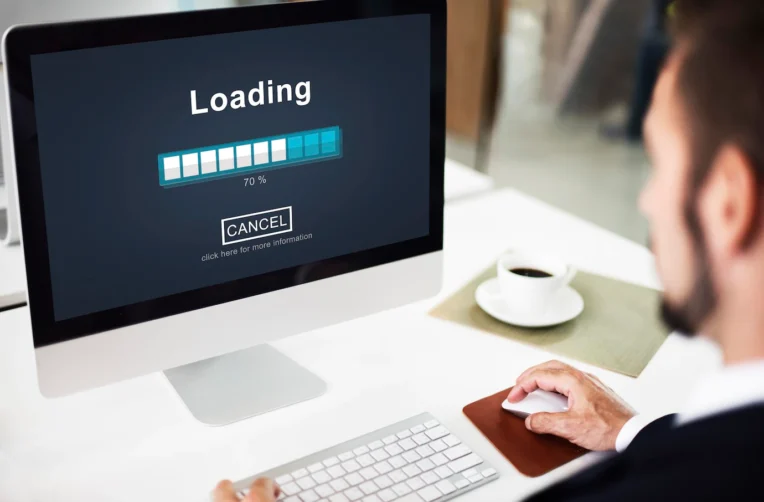You’ve already made three attempts to download that 30 MB file, right?
How many times have you prayed that it doesn’t crash all over again, or how many times have you restarted your computer? If you’re struggling with the process, we can help your issue go away.
Keep on reading and find out what to do in these types of situations.
How to increase your speed and download files faster? Top 8 ways
1. Restart your computer and try out different speed options

Try performing a straightforward restart before continuing.
There could be open browser tabs or programs on your computer that you’ve forgotten about. Simply restart your computer while only one browser is open to start the download. If your device was operating fine, it might be your internet connection. A common measure of internet speed is how much data can be transferred per second.
A speed test can be used to quickly and easily increase download rates.
This can be done by performing a quick Google search for “internet speed test.” By using the “run speed test” option, the download speed can be determined.
2. Disable other devices connected to your router + disable apps that aren’t being used
Speeds may drop as more people and devices share the same internet connection. During the downloading process, try to turn off other devices such as smart TVs, iPads, and phones. It’s possible that doing this will significantly speed up downloads and your connection.
Similar to this, you should cease using the programs on your device before downloading.
Your connection may be slowed down by the programs you currently have open on your computer, which consume a lot of bandwidth.
Video streaming services like Netflix use a lot of bandwidth.
See if the problem is fixed by briefly turning the apps off.
3. Download one file at a time and try to test out or replace your router

When you attempt to download multiple files at once, downloads frequently fail.
Perhaps this is a result of your device being unable to download large files.
One file at a time can make the process go more quickly.
Although it initially seems counterproductive, doing so can really save time. If you wish to allow many devices to share your home network, you must connect a router to your modem. You can connect more devices to your Wi-Fi network and cover more of your home by using a router as an antenna. The modem you’re using was probably provided by your internet service provider. The issue could only require a modem reboot to be resolved.
4. Change the location of your router
The geographic location of your network has a significant impact on the speed of your downloads.
You should consider where to put your router because its signal strength varies depending on where in your house it is.
If your home is unusually large, you may consider purchasing Wi-Fi extenders that can increase the network’s throughput and range.
Keep your router away from any areas that could interfere with it, such as the microwave, basement, bathroom, cabinets, and floor.
The optimal location for your router is in the middle of your home, from which the signal can spread out to every room.
PS: It could be time to switch to a new modem after attempting to restart your modem in an effort to speed up your download speed but failing.
The most precise way to determine how strong the signal is on your device is to put it close to the modem. Your router might be at blame if your connection speeds up as you get closer to the modem.
If your device is too far from the router, it could slow down your downloads.
5. Scan for viruses + limit bandwidth usage

Numerous issues can come up if you have a virus on your computer.
These infections may run background programs that suck up your bandwidth and slow down your download speeds.
To protect your computer from harmful software and other internet risks, think about installing anti-virus software.
You might want to limit the amount of data transferred through your device at any given time in addition to using anti-malware software.
The speed at which data can be transported between nodes, or bandwidth, is one way to measure a network’s capabilities.
Users may notice a substantial reduction in their capacity to download files when the bandwidth on our network is consumed by the many programs, downloads, and upgrades that take place on it.
In this situation, turn off automatic updates in your device’s settings.
By modifying your device’s settings, you can manually control your bandwidth use as well.
6. Clear your cache
Information from the internet is saved via caching so that browsers and other software can access it quickly.
Download times can multiply by two when your browser’s cache is full.
If you don’t want to delete everything in your cache, you can pick and select which items to remove. Do it manually one by one till you’re satisfied with the outcome.
You can clear your computer’s cookies, cached images, and other data to start over.
Click “clear data” in your browser’s settings after selecting the cookies and other data you wish to remove.
There are other browser add-ons available to make frequent cache clearing easier.
7. Try and get maximum power

If you’re not up for fixing the issue by following little steps and you want a real-deal change, why not get Ziply fiber? It is a network-optimized router with custom WiFi installation and signals connection test. You can choose from four different kinds of packs and payment options that work for you. Enjoy unlimited and fast internet access on 4, 6, or an unlimited number of your at-home devices. Watch movies in 4, 8, or 16k resolution and experience fast, lag-free and impressive gaming, no matter the game! If you’re tired of constant lags and you wish to know more about it simply click for more.
